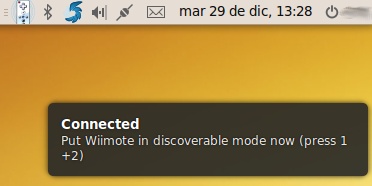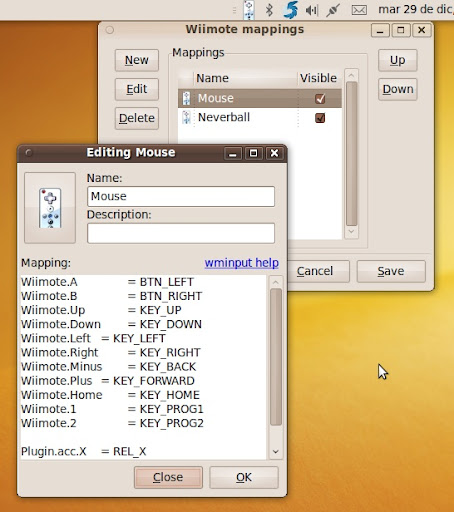Félix Ontañón, a very good friend and hacker from my company, has just released a new versión of a systray application which help to configure and manage the Wii remote control on Linux. The application is called WiiCan and is hosted on Launchpad.
The project has been programed in Python and it uses D-Bus to connect with hal (by now) and bluez for tracking the available bluetooth devices and wiimote connection status.
I’ll copy here from the project’s site the features:
Discover if it’s an available bluetooth device for connect wiimote
Display a list of available keyboard-mouse-wiimote mappings
User-defined mappings creation assistant
Mappings manager:
- New/Edit/Delete
- Up/Down order
- Visible/Invisible
Notify the state of wiimote usaging:
- Bluetooth available/unavailable
- Discovering wiimote
- Wiimote disconnected
And here some screenshots:



I haven’t tryied the application because I haven’t got any wiimote, but some friends have already tested and they’ve told me that it work great, and they are very happy with the tool. So I’d like to invite you to test it and share here your experience.
And also I’d like to invite you to colaborate with the project, reporting bugs, patches and translations.
I hope you enjoy it 😉
